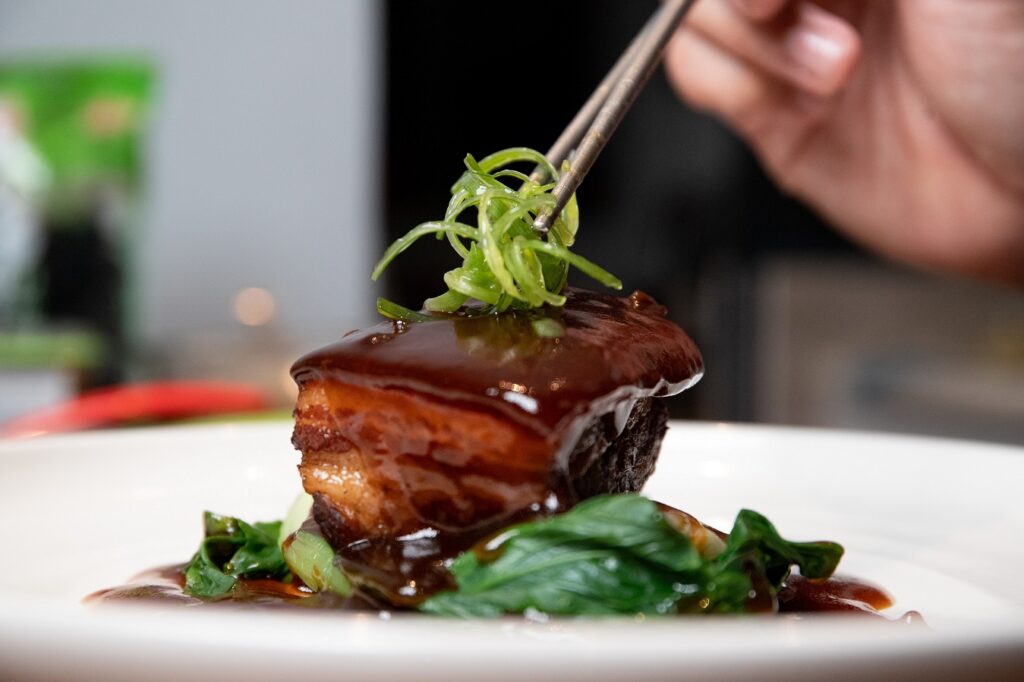Braising: The Art of Tender and Flavorful Creations
Braising is a cooking technique that has been cherished for centuries, known for transforming tough cuts of meat and hearty vegetables into tender, succulent dishes. The combination of slow cooking in liquid and gentle heat creates a flavorful and comforting experience for the taste buds. Here, we will explore the art of braising, its benefits, and provide practical tips for mastering this technique to create tender and flavorful culinary creations.
The Basics of Braising:
At its core, braising involves searing food in a hot pan to develop a rich crust, followed by slow cooking in a flavorful liquid at a low temperature. This combination of high heat and gentle simmering allows tough cuts of meat to break down collagen and connective tissues, resulting in tender, melt-in-your-mouth textures. Additionally, braising infuses the food with the flavors of the liquid and aromatics, creating a depth of taste that is truly satisfying.
Selecting the Right Ingredients:
Braising is versatile and works well with a variety of ingredients, including meats like beef, pork, lamb, and poultry, as well as hearty vegetables. When choosing meat, opt for tougher cuts such as chuck roast, brisket, or shanks, as they benefit most from the slow cooking process. Vegetables like carrots, potatoes, onions, and celery are excellent additions that contribute both flavor and texture to the dish.
Searing for Flavor:
Before the braising process begins, it is essential to sear the meat or vegetables. Searing creates a caramelized crust on the surface, adding depth and complexity to the final dish. Heat a heavy-bottomed pan or Dutch oven over high heat, add a small amount of oil, and sear the ingredients until they develop a golden brown color. This step locks in the natural juices and enhances the overall flavor profile of the dish.
Building Flavor with Aromatics:
Aromatics play a crucial role in braising, as they infuse the dish with fragrant flavors. Common aromatics include onions, garlic, carrots, celery, and fresh herbs like thyme, rosemary, and bay leaves. Sautéing these ingredients in the same pan after searing the meat or vegetables helps to develop their flavors and adds complexity to the braising liquid.
Selecting the Braising Liquid:
The choice of braising liquid greatly impacts the final flavor of the dish. Common options include broth, stock, wine, beer, or a combination of these. Each liquid imparts its unique characteristics, so consider the flavor profile you want to achieve. For example, red wine adds richness and depth, while broth or stock provides a more neutral base. Experiment with different combinations to find your preferred flavor profile.
The Braising Process:
Once the searing and aromatics are prepared, it’s time to bring everything together for the braising process. Return the seared ingredients to the pot, add the braising liquid, and bring it to a simmer. Cover the pot with a lid and transfer it to the oven or continue cooking on the stovetop at a low heat. The slow cooking process allows the flavors to meld together while tenderizing the meat or vegetables.
Time and Temperature:
The key to successful braising lies in patience and precision. Low and slow is the mantra of braising. Cooking at a low temperature, typically between 300-325°F (150-160°C), ensures gentle heat distribution and gradual breakdown of tough fibers. The cooking time can vary depending on the cut of meat or the type of vegetable, but as a general guideline, allow for several hours of cooking to achieve the desired tenderness.
Enhancing Flavor and Texture:
As the dish braises, flavors meld together, and the meat or vegetables become tender. To further enhance the taste, consider adding additional ingredients towards the end of the cooking process. This could include mushrooms, tomatoes, citrus zest, or even a splash of vinegar or soy sauce. These additions can brighten the flavors and provide a pleasant contrast to the rich, braising liquid.
Serving and Accompaniments:
Once the braising process is complete, remove the meat or vegetables from the pot and strain the braising liquid to create a flavorful sauce or gravy. Serve the tender braised food on a platter, drizzled with the sauce and accompanied by complementary sides such as mashed potatoes, roasted vegetables, or crusty bread. The sauce can also be reduced and thickened separately if desired.
Experimenting and Adapting:
Braising is a technique that invites creativity and experimentation. While traditional recipes are a great starting point, don’t be afraid to adapt and personalize them to suit your taste preferences. Experiment with different herbs, spices, and flavor combinations to create unique and exciting braised dishes. Embrace the art of braising as a canvas for your culinary imagination.
Braising is an artful technique that transforms tough ingredients into tender and flavorful masterpieces. By understanding the basics of braising, selecting the right ingredients, searing for flavor, and utilizing aromatics and braising liquids, you can create delicious and comforting dishes. Embrace the slow cooking process, allowing flavors to meld and textures to become tender. With practice and creativity, you can elevate your braising skills and delight your palate with a variety of tender and flavorful creations.
